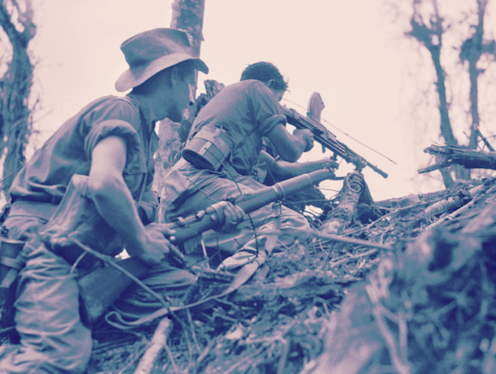Catherine McKinnon’s panoramic new novel presents a gritty view of war’s complexities
- Written by Brigid Magner, Associate Professor in Literary Studies, RMIT University

Catherine McKinnon[1] graduated from Flinders University Drama Centre, South Australia, and was a founding member of the Red Shed Theatre Company, where she worked as writer and director.
After a period in South Australian theatre, she moved to Sydney to complete a Masters in Creative Writing at UTS, where she began her first novel, The Nearly Happy Family[2] (2008). She followed it with Storyland[3] (2017), written while undertaking her PhD.
Her work been nominated for an AWGIE Award[4], the Jill Blewett Playwright’s Award[5], and the Indie Awards[6]. Storyland was shortlisted for the Miles Franklin Literary Award[7], the Barbara Jefferis Award[8] and the Voss Literary Prize[9].
Review: To Sing of War – Catherine McKinnon (HarperCollins)
McKinnon’s latest book To Sing of War[10] is a panoramic novel, which takes in multiple settings and characters in the mode of David Mitchell’s celebrated Cloud Atlas[11] (2004). Like Storyland, it is a network of stories, with subtle overlaps.
Storyland was marketed as a book for readers of Kate Grenville, Tim Winton and Robbie Arnott, on the strength of its historical content and its compelling engagement with place and ecology. To Sing of War may prove to have even wider appeal due to its focus on World War II, including the Manhattan Project[12] to develop the atomic bomb, led by the infamous Robert Oppenheimer.















